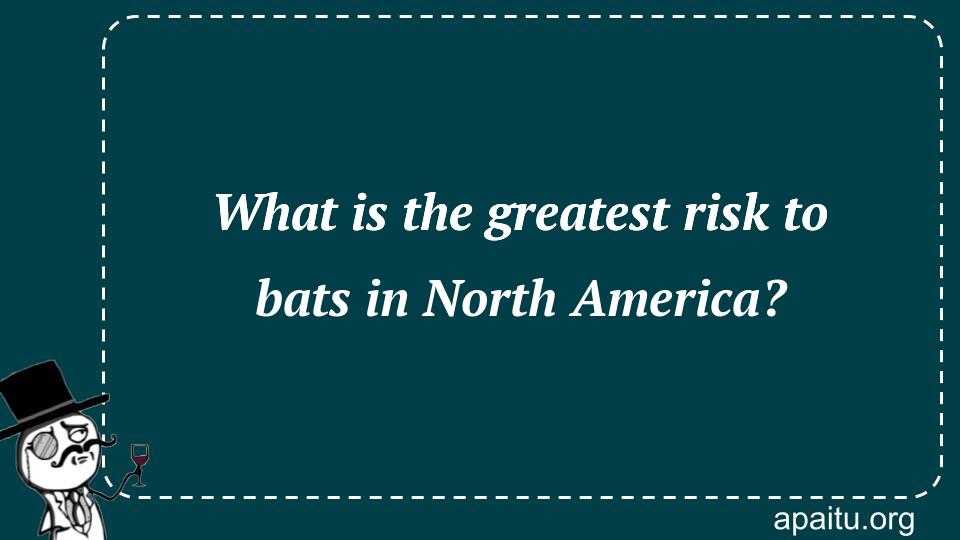Question
Here is the question : WHAT IS THE GREATEST RISK TO BATS IN NORTH AMERICA?
Option
Here is the option for the question :
- Hunting
- Deforestation
- Fungus
- Pollution
The Answer:
And, the answer for the the question is :
Explanation:
More than half of the bat species in the United States are either in steep population decline or are on the verge of extinction. Pseudogymnoascus destructans is a European fungus that poses the greatest threat to these animals, despite the fact that the destruction of their natural environment and shifting weather patterns are both looming threats. The fungus is to blame for the condition known as ‘white-nose syndrome,’ which is responsible for the deaths of millions of bats across the United States and Canada. Researchers are working around the clock to find a cure for the fungus that has infected bats.

Bats are an important and fascinating group of mammals found throughout North America and around the world. However, in recent years, they have faced a growing threat from a deadly fungus known as white-nose syndrome. This disease has devastated bat populations across the continent, and scientists are working hard to understand and combat this grave threat.
White-nose syndrome is caused by a fungus called Pseudogymnoascus destructans, which was first discovered in a cave in New York in 2006. It is believed to have originated in Europe, where it does not cause significant harm to bat populations. However, when it was introduced to North America, it quickly spread and began to have devastating effects.
The fungus grows on the skin of hibernating bats, causing irritation and disrupting their normal sleep patterns. This can cause bats to wake up more frequently during the winter, when food is scarce, leading to decreased body fat and energy reserves. In addition, the fungus can cause dehydration and electrolyte imbalances, which can be fatal.
White-nose syndrome has had a particularly severe impact on certain bat species, such as the little brown bat and the northern long-eared bat. These species have experienced population declines of up to 90% in some areas, and several have been listed as threatened or endangered under the Endangered Species Act.
Scientists are working hard to find ways to combat white-nose syndrome and protect bat populations. One approach is to develop treatments that can kill the fungus or prevent it from spreading. For example, researchers are exploring the use of natural compounds such as chitosan and citric acid, which have been shown to inhibit the growth of the fungus. In addition, efforts are underway to develop vaccines that can help bats build up immunity to the disease.
Another important strategy for protecting bat populations is to conserve their habitats and reduce other threats they face, such as habitat loss and pesticide exposure. This can help to strengthen bat populations and make them more resilient in the face of disease outbreaks like white-nose syndrome.
white-nose syndrome is the greatest risk to bats in North America, and it has had a devastating impact on bat populations across the continent. The disease is caused by a fungus that grows on the skin of hibernating bats, causing disruption to their sleep patterns and leading to dehydration and electrolyte imbalances. Scientists are working hard to find ways to combat the disease and protect bat populations through the development of treatments, vaccines, and habitat conservation efforts. It is vital that we continue to invest in these efforts to protect these important and fascinating creatures for generations to come.